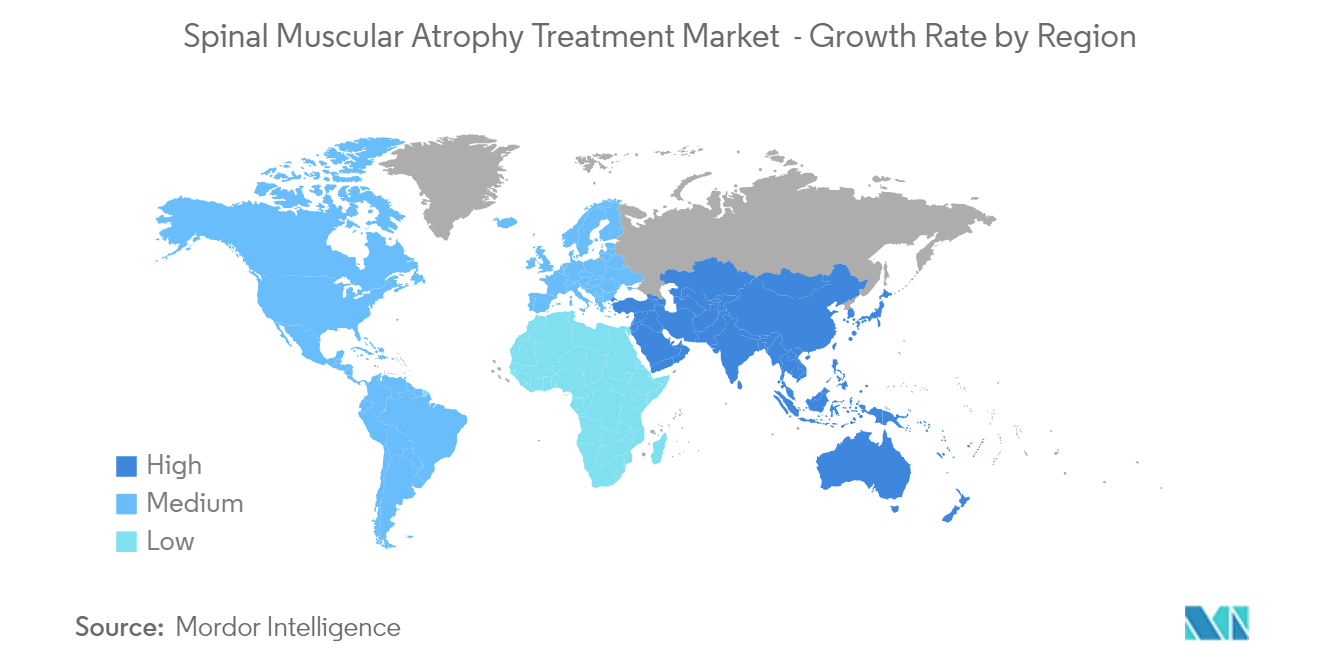Market Trends of Global Spinal Muscular Atrophy Treatment Industry
This section covers the major market trends shaping the Spinal Muscular Atrophy Treatment Market according to our research experts:
The Gene Replacement Therapy Segment Dominates the Market, and the Same is Expected Over the Forecast Period
Gene replacement therapy is the technique of recognizing a faulty gene, applying a piece of DNA in its correct form through a viral vector (known as the carrier molecule) to the gene, thus, overriding the identified faulty gene with the correct copy.
Gene replacement therapy is expected to dominate the spinal muscular atrophy treatment market over the forecast period, attributing to its advantages over the disadvantages. However, investment in research and development activities is also expected to have a significant effect on the segment. Companies such as Pfizer Inc. are aiming to build a gene therapy platform with a strategy focused on establishing a transformational portfolio through in-house capabilities and enhancing those capabilities through strategic collaborations, expansion of R&D activities, and potential licensing and merger and acquisition activities. For instance, in August 2019, Pfizer was investing USD 500 million to expand a manufacturing facility in North Carolina, which plays a central role in its efforts to become a major player in the gene therapy industry.
The effects of gene replacement therapy are long-lasting and improve the quality of life by eradicating genetic disorders. Recently in May 2019, the US FDA approved Zolgensma for the treatment of spinal muscular atrophy is a gene therapy, which is found to be the most efficient in results, and many other drugs are in the pipeline. Thus, gene replacement therapy dominates the spinal muscular atrophy treatment market. However, the healthcare cost for gene therapy using Zolgensma is high, but this may hamper the market to a very less extent, as the government is raising huge funds for the treatment of rare diseases. For example, under the government's Ayushman Bharat scheme in India, the current draft policy provides up to INR 15 lakhs for rare disease treatment to patients who require one-time treatment.
Thus, all aforementioned factors, such as the advantages of gene replacement therapy and technological advancement in gene therapy, may boost the segment over the forecast period.

North America Dominates the Market, and the Same is Expected Over the Forecast Period
North America is expected to dominate the overall market throughout the forecast period, which is attributed to the developed economy, increasing health care expenditure, increasing incidence of lifestyle-related diseases, and high adoption of technologically advanced products in the region. According to the article published by Columbia University in November 2021, more than 7,000 rare diseases affect 25 million to 30 million American children and adults. More than 90% of rare diseases lack a Food and Drug Administration (FDA)-approved treatment. The reimbursement policies in the United States, especially for the treatment of rare diseases, further boost the market in North America.
Moreover, many key players in the market are focused on adopting strategies, such as mergers and acquisitions, to enhance their product portfolio, which, in turn, is expected to propel market growth over the forecast period. For instance, in August 2020, the US Food and Drug Administration approved Evrysdi (risdiplam) to treat patients two months of age and older with spinal muscular atrophy (SMA), a rare and often fatal genetic disease affecting muscle strength and movement. Thus, North America dominates the spinal muscular atrophy treatment market during the forecast period.


